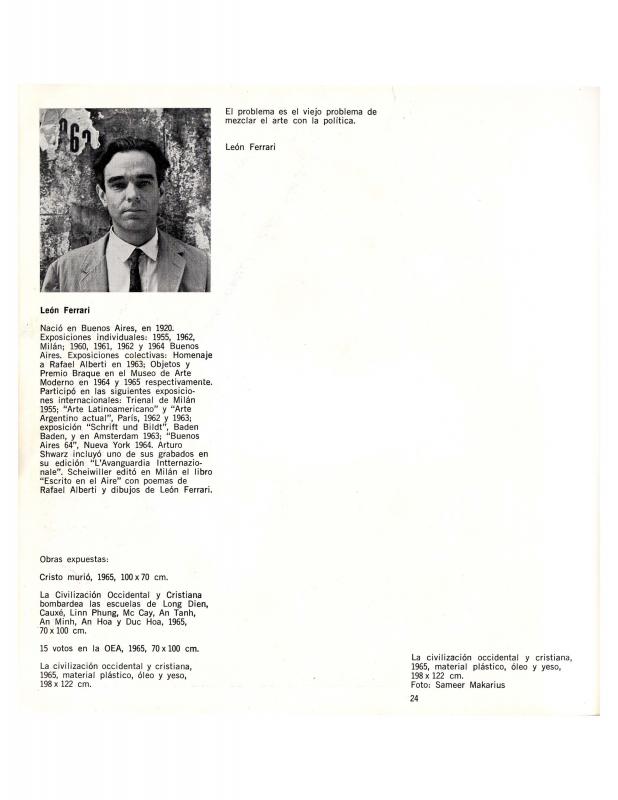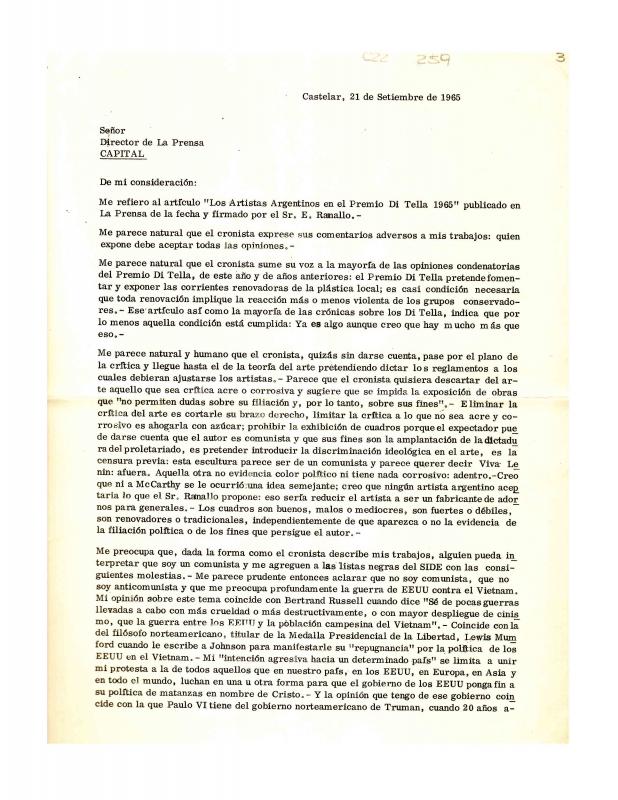León Ferrari (1920–2013) was born in Buenos Aires, the son of Augusto Cesare Ferrari, the Italian artist and architect. The younger Ferrari was a latecomer to the plastic arts, a status which allowed him to function as a link between the generation of artists from the late fifties and the young avant-garde of the sixties. His early works were ceramic sculptures, but in later years he experimented with wire structures, with a visual form of writing, and with collages. There are two distinct themes running through his work: one is a strong condemnation of military dictatorships, American imperialism, and the ideology of the Catholic Church. The other has a more formalistic quality, expressed in a conceptual style and, at times, in the surrealist tradition. His 1965 object-montage, titled Civilización Occidental y Cristiana [Western Christian Civilization], was censured at the Centro de Artes Visuales del Instituto Torcuato Di Tella [the Torcuato Di Tella Institute’s Visual Arts Center] (see documents 743800, 744085, and 761879). It depicts a Christ mounted on a US Air Force bomber that is plunging Earthward. Ferrari was involved in the political conceptualism movement of the seventies (particularly Tucumán Arde, in 1968). In response to the most recent Argentine military dictatorship’s repressive regime (1975-83), he went into exile in Brazil, where he explored a variety of ideas, such as formalism and the reproducibility of a work, as well as the spatial relationship between sculpture and music (see documents 743960, 744392, and 743870, among others). In 1984 his work was once again exhibited in Buenos Aires, where he finally returned and settled. Punto de Vista is an Argentine magazine devoted to literary criticism, the history of ideas, aesthetic commentary, and cultural, political and media reviews. The first issue appeared in March, 1978. Its members included writers, critics and artists such as Carlos Altamirano, Ricardo Piglia, María Teresa Gramuglio, Hugo Vezzetti, and Beatriz Sarlo. After the events of 1983 it became an influential publication during the transition to democracy, when the intellectuals who had been living in exile were welcomed home. The current Editor is Beatriz Sarlo, mentioned above. In 1984, León Ferrari returned to Buenos Aires after living in exile in Brazil. During the mid-eighties, when he was at the center of the art world in Argentina, his work was profoundly critical of religion. María Teresa Gramuglio is a critic of Argentine literature. She and her husband, Juan Pablo Renzi (1940-1992), the Argentine artist, were deeply involved in the implementation of Tucumán arde.






